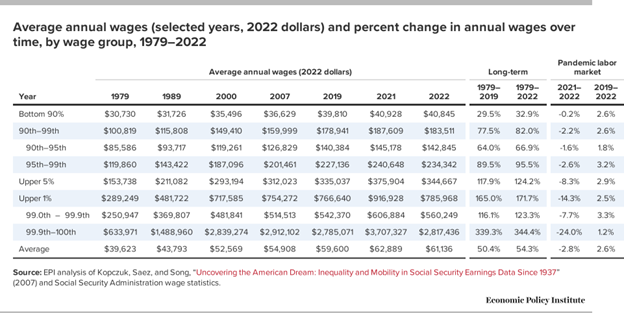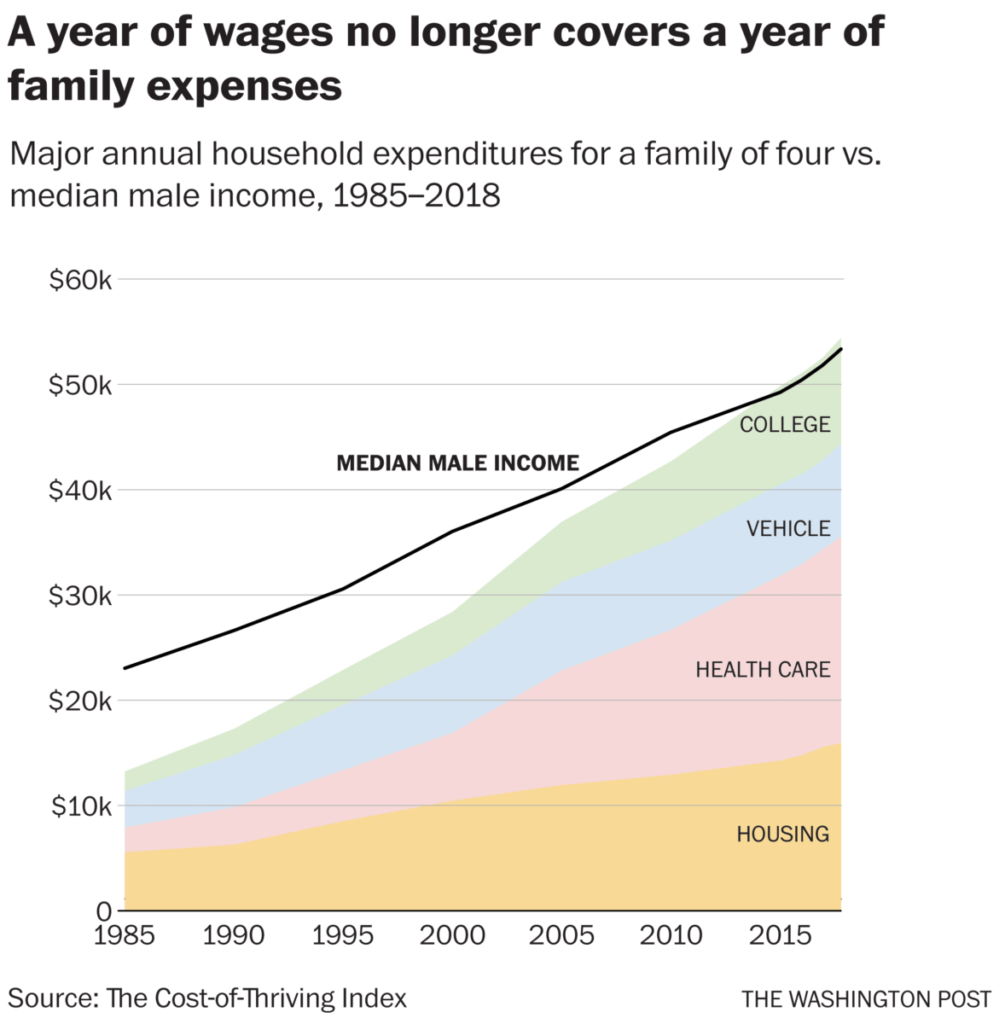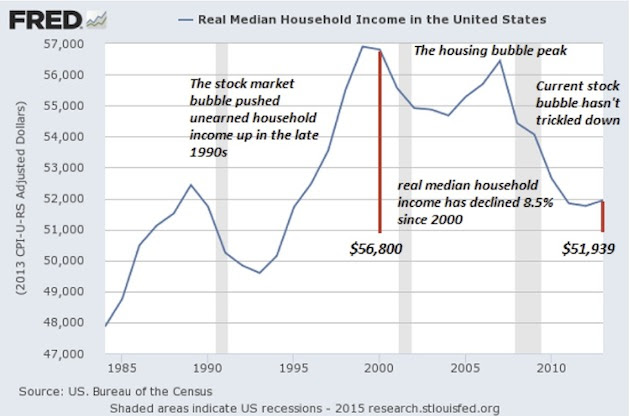The Daily Escape:

Sunrise, Camden Harbor, Camden, ME – January 2024 photo by Daniel F. Dishner Photography
The Economic Policy Institute (EPI) has crunched the latest Social Security Administration (SSA) wage data. It shows the average American workers haven’t made much money since the 1970s:
“The latest SSA data demonstrates how vastly unequal earnings growth has been between 1979 and 2022. Over that period, inflation-adjusted annual earnings for the top 1% and top 0.1% skyrocketed by 171.7% and 344.4%, respectively, while earnings for the bottom 90% grew just 32.9%.”
That’s 33% over 43 years, less than 1% per year. The largest share of total earnings in the US economy have accumulated at the top of the wage ladder. The EPI is describing “labor market earnings”, the pay (including benefits) of the 80% of workers who are not managers or supervisors at work. For decades before 1980, these workers’ hourly pay largely tracked economy-wide productivity growth.
When productivity growth slowed significantly, hourly pay growth collapsed even faster, leading to a growing gap between these typical workers’ pay and overall growth. That difference in missing pay for typical workers went to workers at the top or to business owners.
The EPI study shows that if you’re in the bottom 90% of wage earners, you’ve seen annual wage growth of less than 1% per year over the past 43 years. If you’re in the “upper middle class” things were very different. Here’s a chart from EPI:

Average wages in the 95th to 99th percentile have almost doubled, from $120K to $234K (all figures are in 2022 dollars). But this leaves out the real winners, the top 1%. Average wages for them went from $289K in 1979 to $786K in 2022. But even this huge growth is eclipsed by the wages of the top .1%, which increased an astounding 344%, going from $634K to $2.82 million.
Note that the data are for average annual wages which for the bottom 90% were $40,845 in 2022. Data on average wages are all that’s available, but it’s misleading. The MEDIAN wage for all workers is around $34k. That means half the bottom 90% are making LESS than 34k. Also, median household income is around $76k; which is two people working in the same household.
The media and the rest of us really have no idea how little the average person is earning.
And this is just income from wages. People at or near the top of the pyramid own the vast majority of the equity capital in the US — the top 10% of households own 85% of the total corporate stock owned by households.
The economic debate in America since the 1880s has been between those in favor of lightly regulated heavily financialized consumer capitalism, with some very modest income redistribution, sufficient — barely — to keep the losers in that economy from starving or freezing to death.
The other side are the Republicans who think England in the Industrial Revolution, is a model for what America ought to look like today. And Chase’s CEO Jamie Dimon says we should listen to Republicans more. He’s specifically talking about NATO and immigration.
And this has been the GOP’s pitch forever:

Democrats need to address the negative impacts of US wage distribution as part of their 2024 pitch to keep the presidency, and return to controlling the House and Senate in November.
The Fields of Wrong are covered in snow, mostly due to temperatures being below freezing for the past several days. We had a tree fall into the road during the big windstorm last Sunday. Now it sits, snow-covered, on our property waiting for our next chain sawing event.
It’s Saturday, and professional football will be all over the television for the rest of the weekend. Good luck to those of you who follow one of the remaining eight teams. It’s time for our Saturday Soother, where we try to forget about the Red Sea, the New Hampshire primaries and funding the government, and instead try to calm ourselves for a few moments. Hopefully we’ll be in better shape to launch into the roller coaster ride of next week’s horrors.
Take a few minutes and grab a chair by a window. Now, watch and listen as John Williams is persuaded to conduct the National Symphony Orchestra in a performance of his “Imperial March” from Star Wars during a gala to celebrate his 90th Birthday.
There are many seriously talented people on the stage, including track star Florence Joyner, cellist Yo-Yo Ma, Steven Spielberg, violinist Anne-Sophie Mutter, and Star Wars actor, Daisy Ridley. Williams is 91, still going strong, and an example to those who think young Biden is too old to run again. Bravo, Maestro:




